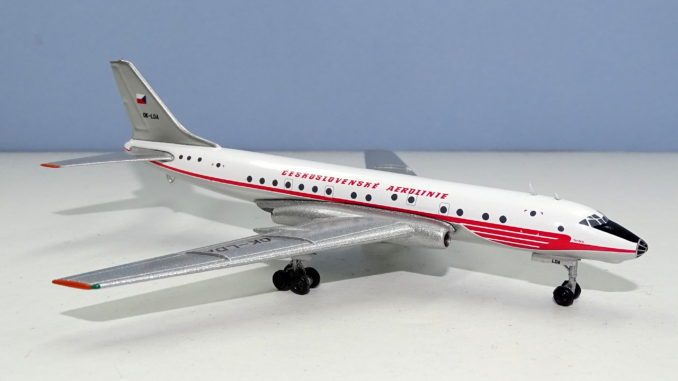
Getting involved with the world of manufacturing diecast models is not for the feint hearted and the road to completion of this much awaited model has been far from smooth for the owner of Retro Models. Nevertheless, after more than a year since announcement and a variety of highs and lows when it looked like the model would never appear the first Tu-104 in 1:400 scale is here. It is hopefully a fabulous antidote to those sick of seeing continuous 787s and A320s and yearning for more classic material from the dawn of the jet age. Let’s see if it is.
THE REAL THING

The Tu-104 (NATO reporting name Camel) represents a pinnacle of Russian aviation design successfully gazumping the West by getting a jet aircraft into commercial service, to stay, in 1956. The British had of course had the Comet 1 in service in May 1952 but sadly the type couldn’t survive its own fatal design failings. Despite the Soviet’s rough and ready approach, the Tu-104 would go on to form the basis of the successful Tupolev lineage of short and medium range airliners.
The Tu-104 was a major adaptation of the Tu-16 Badger bomber keeping the wings, vertical stabiliser and engines of the bomber, but mating them with a new fuselage equipped to carry up to 50 passengers (not a bad load in the 1950s) with a five-man crew, including a navigator seated in the glazed nose. An unusual feature was that the passenger cabin was broken into a forward and rear section divided by a raised area where the wings were attached, which was used as a galley.
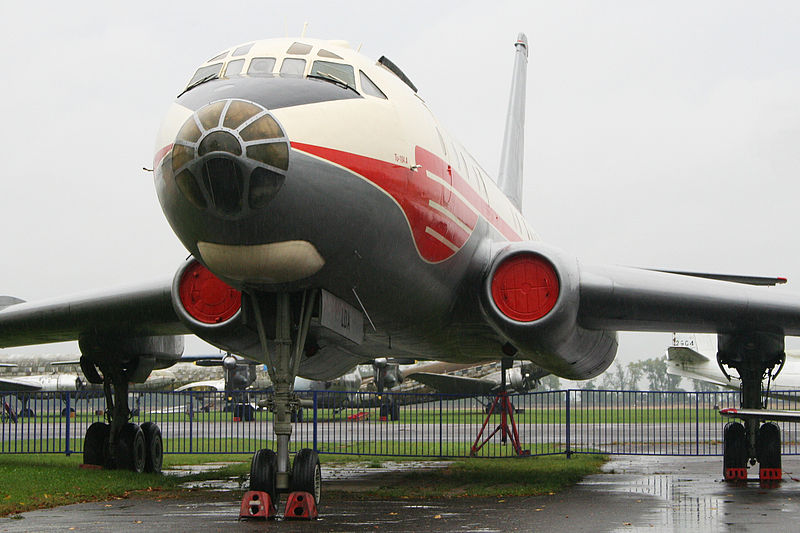
CSA the Czechoslovak national airline was always something of a trendsetter within the Eastern Bloc airlines and it became the only export customer for the Tu-104 in 1957. It took four of the improved 1957 variant the Tu-104A, which thanks to more powerful engines could seat more than 70 (CSA squeezed in 81). A further two ex-Aeroflot units were added from in 1962 and 1963.
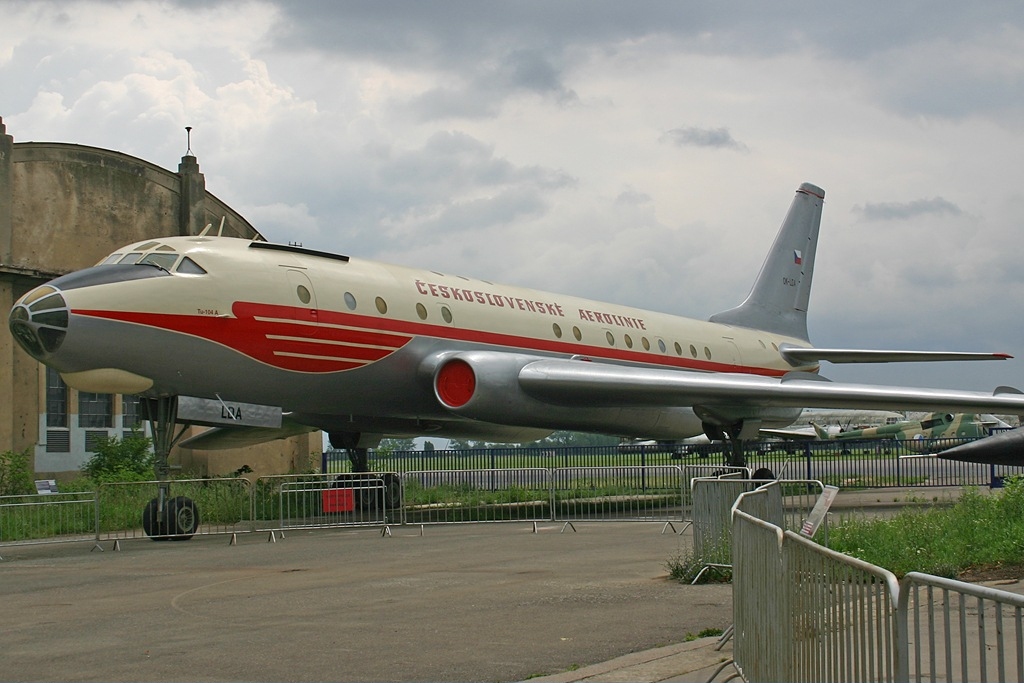
The first aircraft, OK-LDA named Praha after the Czech capital, joined on November 2, 1957 and flew its first revenue flight on the Prague – Moscow service on December 9. This became the first jet-only route in the world. The Camel was a difficult aircraft to fly especially on landing where a very high speed was required to avoid stalling. Nonetheless, it remained in service until the late 1970s and CSA’s fleet weren’t retired until 1973 (although admittedly three of them were lost in accidents).

Despite its shortcomings the Tu-104 has to be seen as a major win for the USSR, helping to keep up the illusion that the Communist system could keep up and even surpass that of the West. OK-LDA remained in service herself until September 14, 1973 and has been preserved at the Aviation Museum of Konesin ever since.
THE MODEL
The format for my reviews is to split them into three key areas:
- The mould of the aircraft
- The paint and livery
- Printing and quality control
Each can get a maximum score of 10 for a section giving a maximum combined total score of 30.
THE MOULD
There is a wide variety of older and more diverse aircraft types awaiting their chance to appear in 1:400 scale and the Tu-104 is certainly one of the more historically important types. Even so Soviet era aircraft are nowadays very rare at this scale and it is something of a minor miracle that the Camel has acquired a mould. It is made easier however by the preservation of OK-LDA, which is well photographed and provides an excellent source from which to assist in the creation of the tooling.
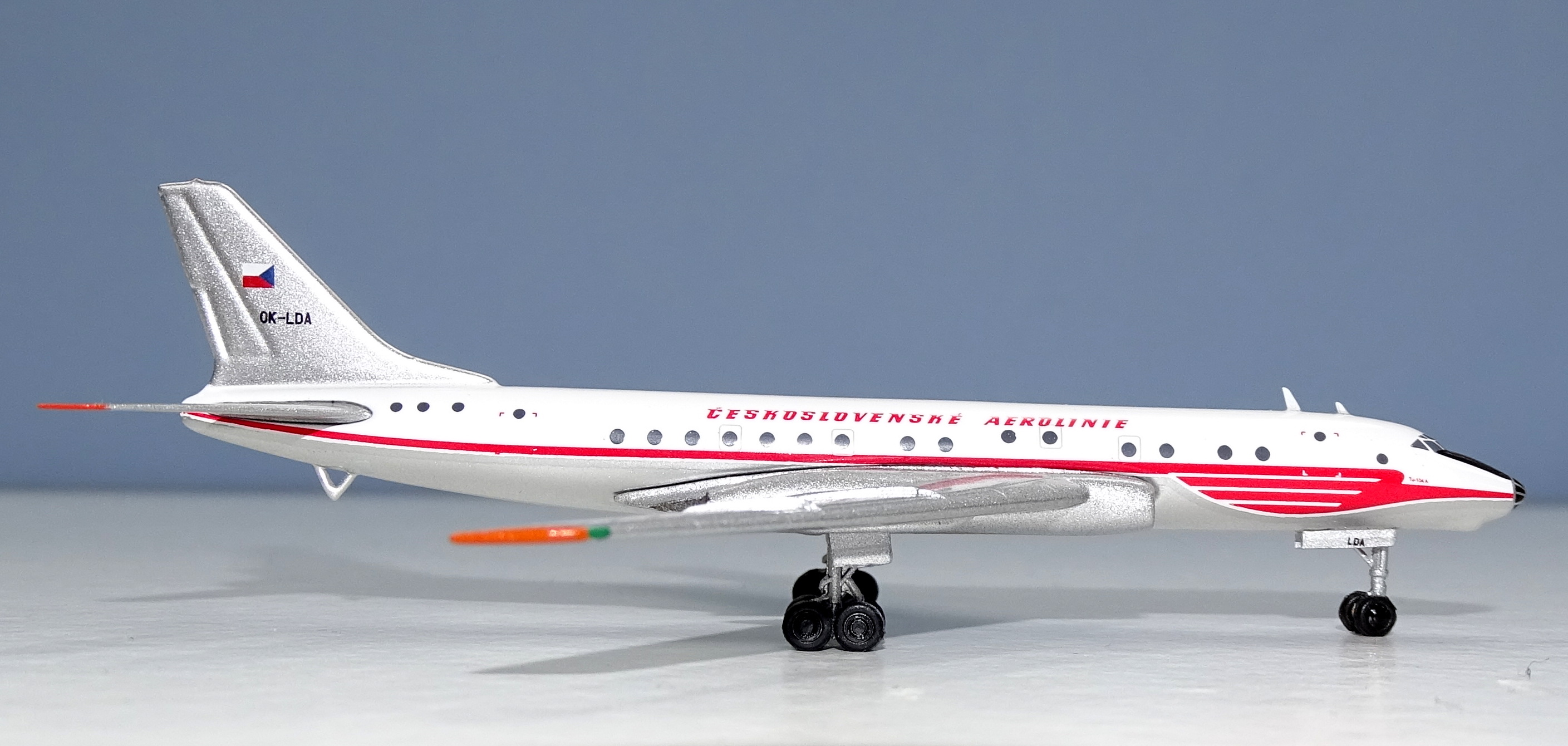
The result is a very fine mould which captures the look and feel of the turbojet well. The nose is well shaped and has the classic asymmetric shovel style shape at the nosecone, which has the glazed cone printed on rather than added as a separate plastic piece. Similarly, the long port side strake to the rear of the cockpit is also printed rather than moulded. The under nose radome is perhaps a little weak but otherwise the forward fuselage is excellent.
The wings have the correct downward profile towards their tip and the rather thick chord leading towards the engines. The wing/fuselage join is very discrete and well moulded also. The rear fuselage has no issues and it is a nice detail to see the prominent tail bumper added under the rear fuselage.
In terms of aerials the Tu-104A had four grouped closely together forward and three of these are on the model, including the lower aerial close to the forward landing gear door on the port side. They are all good aside from the larger dorsal aerial being too thick.
The only area of criticism that can be levelled at the mould is in the forward undercarriage. The maingear is well placed and sized however the forward nosegear tyre is the same size on the model as the rear, which is incorrect. It ought to be smaller. The other issue is that the nosegear bay doors are too short by a few mm at the rear. Both these issues should be easily fixable.
Overall this is a fine mould for what is an unusual and difficult type to get correct when you’re used to making 737s and A320s. The Retro Models mould has been built at the Inflight factory (who also make Aviation400) so it is good to see that despite the rather extended time it took for the model to reach the customer they at least put some effort in to get it right.
SCORE – 9
PAINT & LIVERY
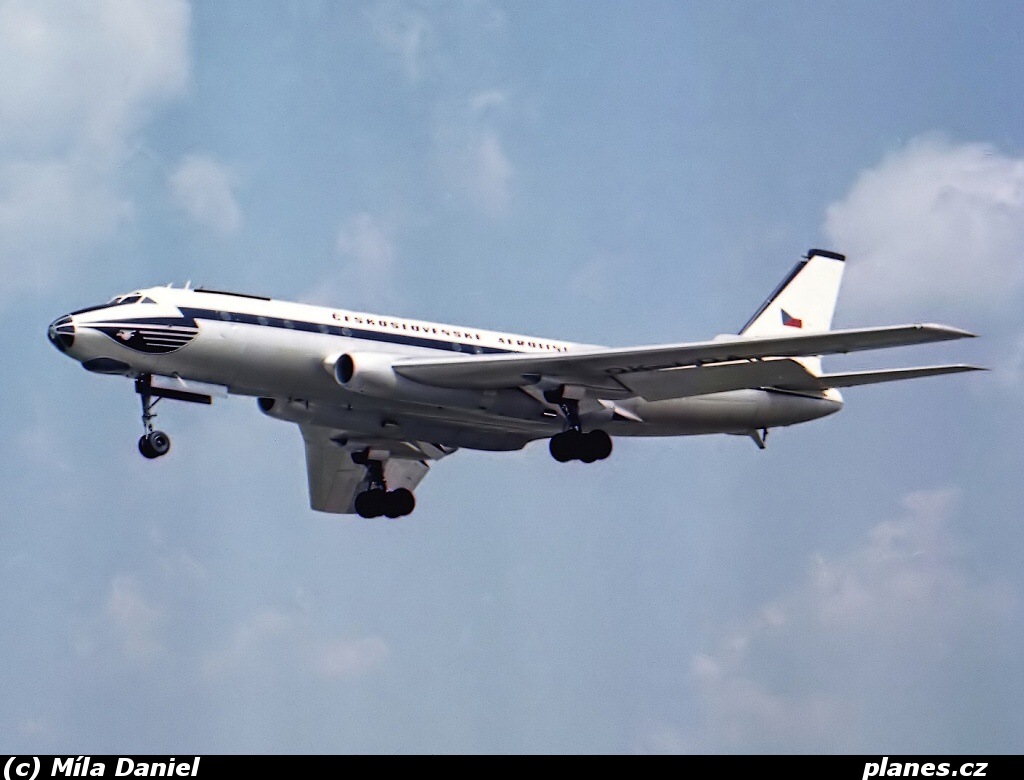
The livery applied to this aircraft depicts it as the aircraft currently exists and as it appeared during the majority of its career. However, it is not the delivery colour scheme, which had a similar cheatline (albeit with a shorter wing element at the front and higher to pass through the windowline) but in blue. The tail on the original scheme was also white. In some ways the original version seems more modern but the red cheatline is certainly more like CSA.
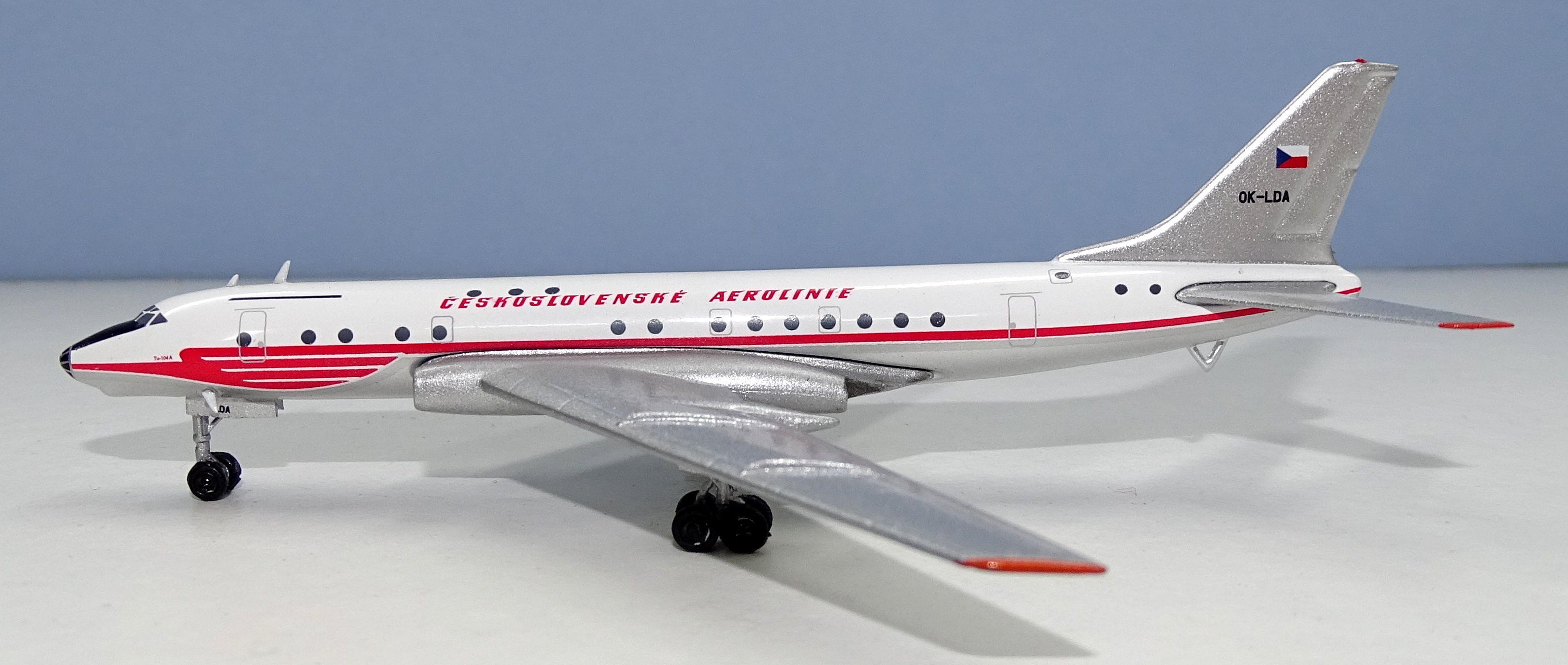
Livery application on the model is pretty decent although the scheme isn’t exactly complicated. In general, it is accurate although the red cheatline is a little too low and should be fractionally higher than it is. The main titles should also be fractionally lower so they don’t appear so close to the unusual rooftop windows on the port side.
Other features of the scheme like the tiny Tu-104A text by the nose, the large anti-glare panel in front of the cockpit, the red wingtips and the rego number on the nosegear doors are all present an correct.
In some, but not all photos, the aircraft also has a red stripe across the top of the tail however as it isn’t always present, I won’t count it as an error.
SCORE – 9
PRINTING & QUALITY CONTROL
Printing on the model is essentially good, but there is room for improvement. The shape of the upper cockpit windows is not quite correct. They ought to be taller. More annoyingly the windows on the port side do not align properly with the main entry L1 door or the first emergency exit. In fact, the main entry door cuts through the window. The positioning of the complex windowline is pretty good overall with the higher windows accurately present amidships and at the rear.
An area that could do with some more detailing is the vertical stabilizer. Being natural metal the panel lines of the original are easily seen and the model could certainly do with some NG style fine panel line detailing on the tail.
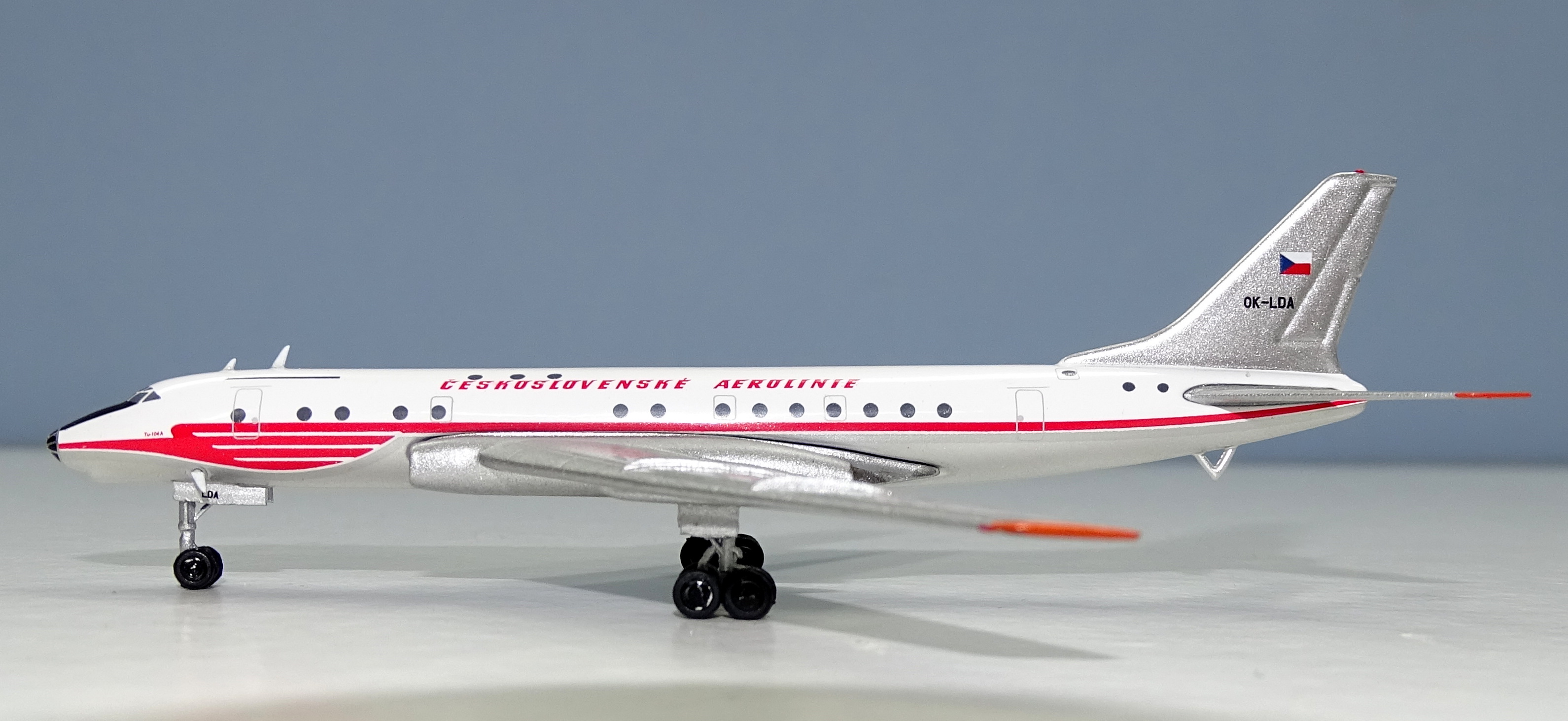
It is nice to see that the engine inners, although small, are painted black and the engine hubs are also black. The hub painting is not as well done on the port side as the starboard. Build quality for the model is sound and there are no issues.
SCORE – 8
CONCLUSION
I really like this model and it is a very welcome addition to my collection, adding a sprinkling of diversity in a see of aircraft with pod mounted engines. I am a firm supporter of anyone producing earlier generation aircraft or Soviet era types. I understand they aren’t going to sell as well as a 787 but what this hobby needs is more enthusiasts getting involved and less attention to the latest aircraft. After all, without types like the Tu-104 there would be no 787s and the history of aviation is not only super-interesting but deserves to be remembered. Well done Retro Models for finally being able to bring the Tu-104 to 1:400 scale.
FINAL SCORE – 26

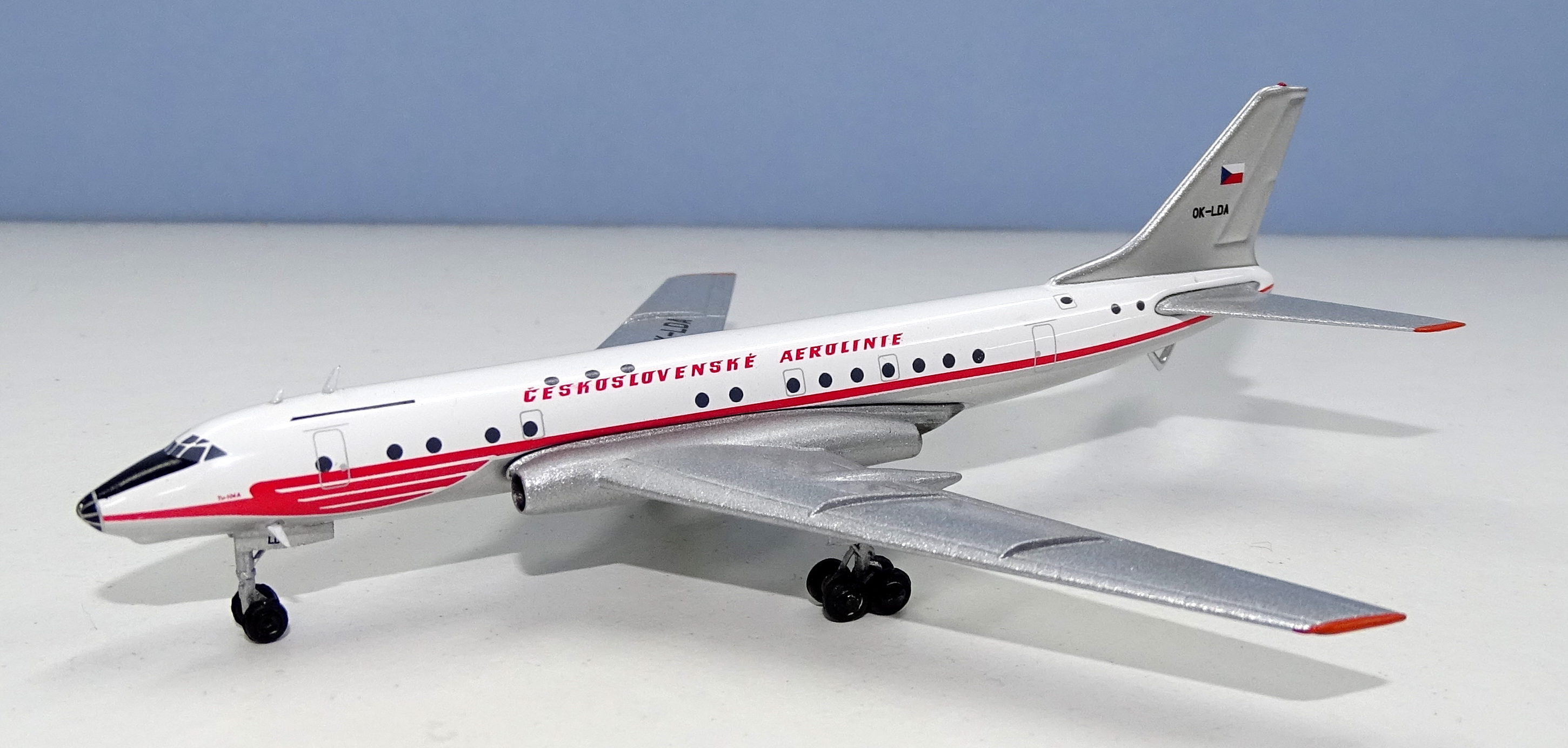

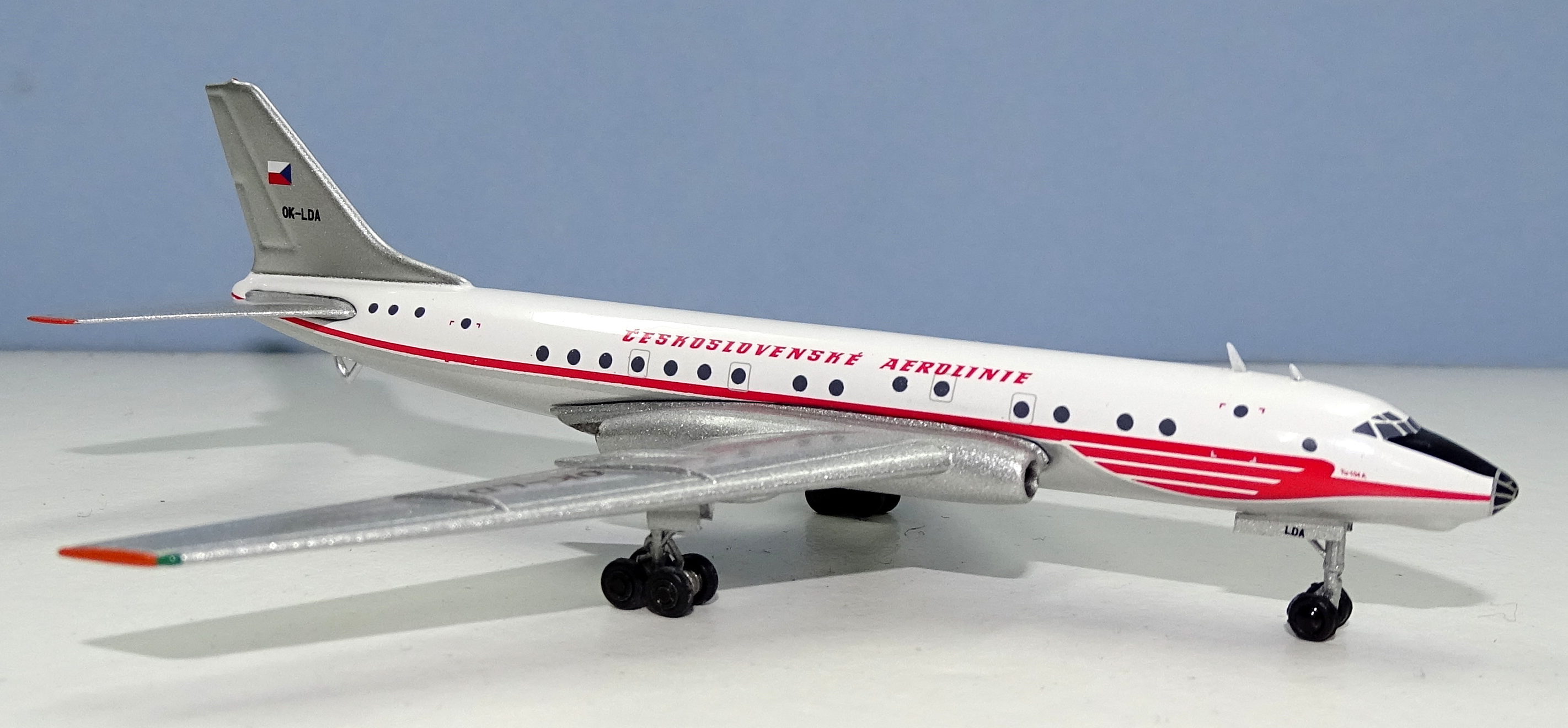
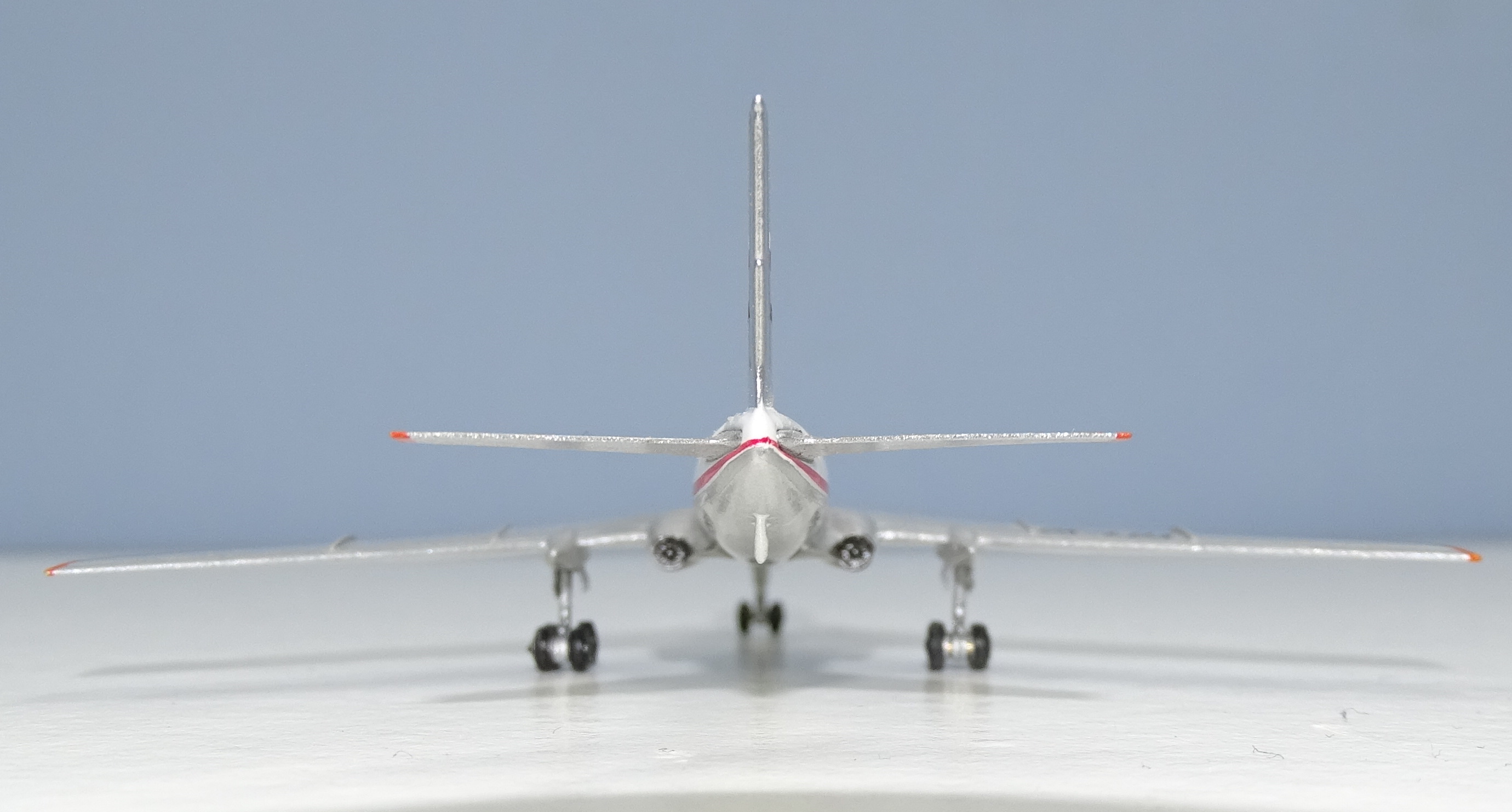
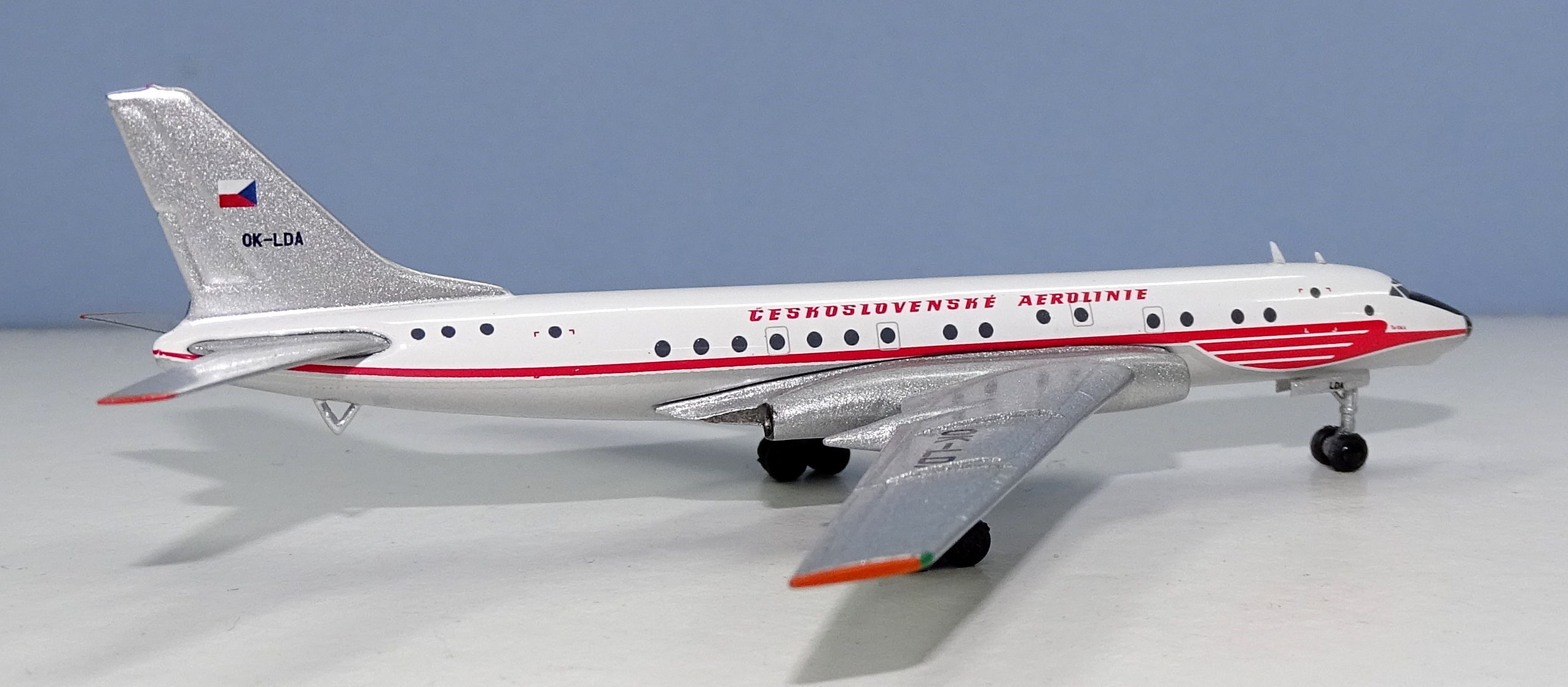
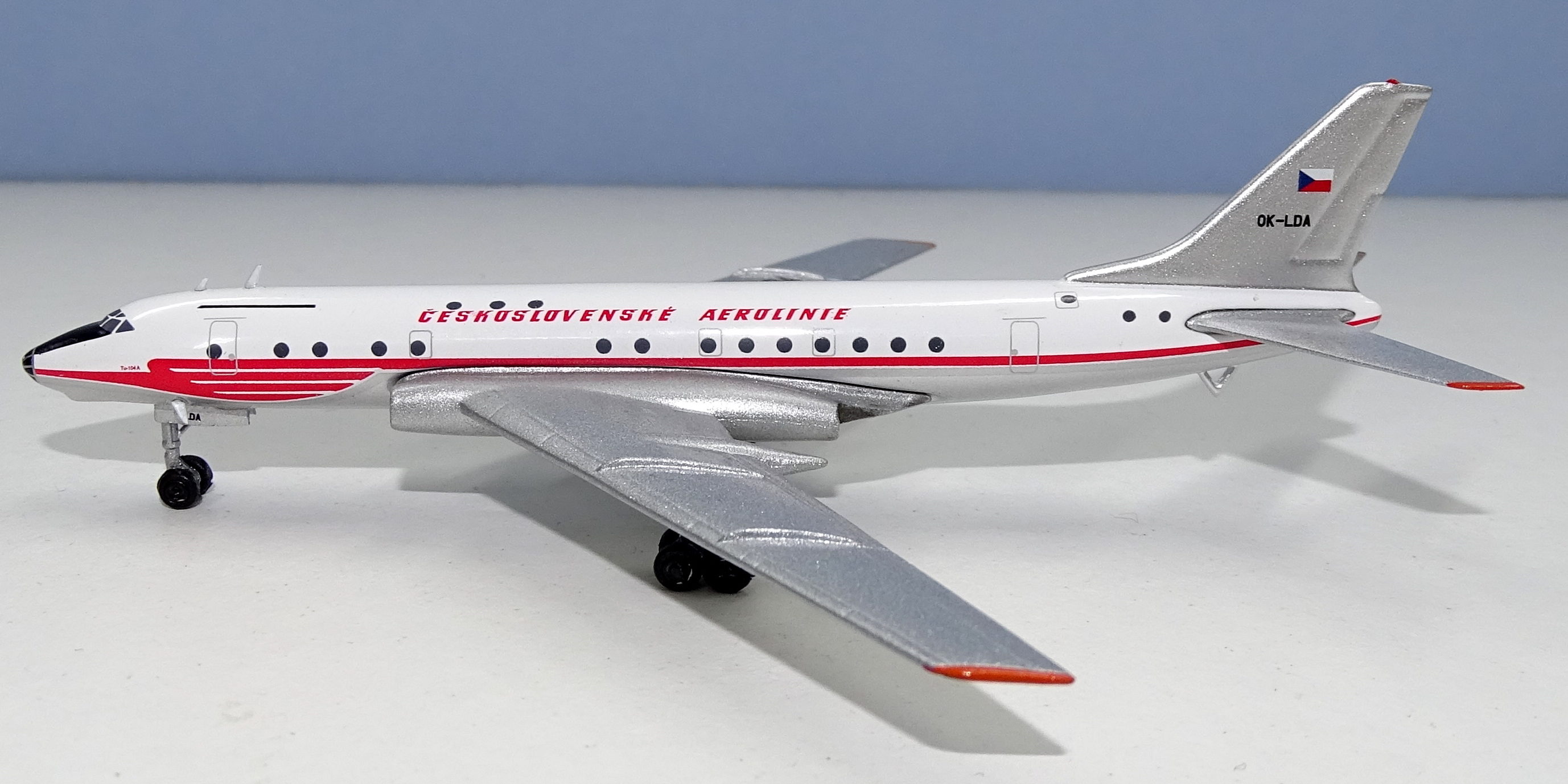
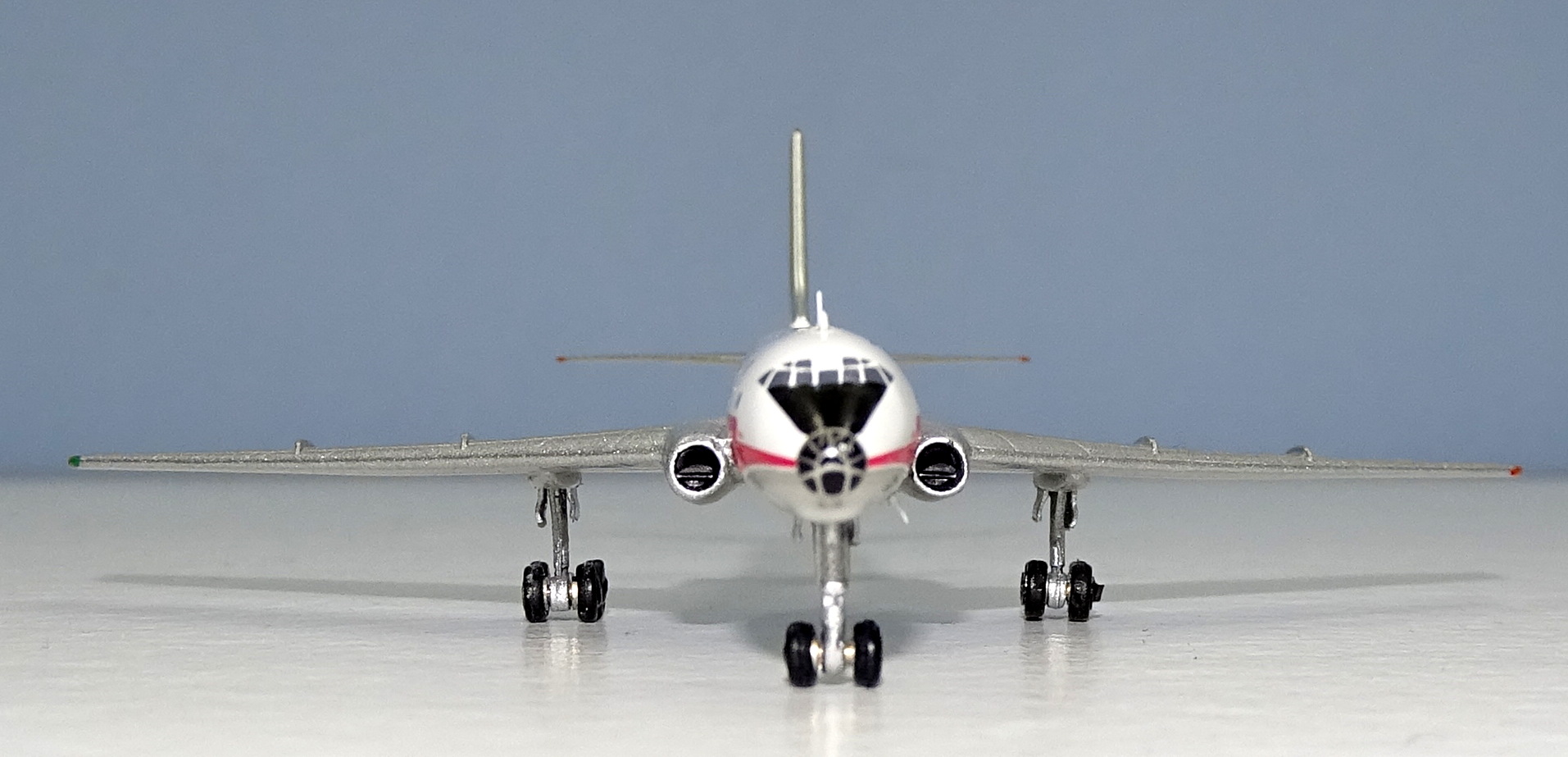
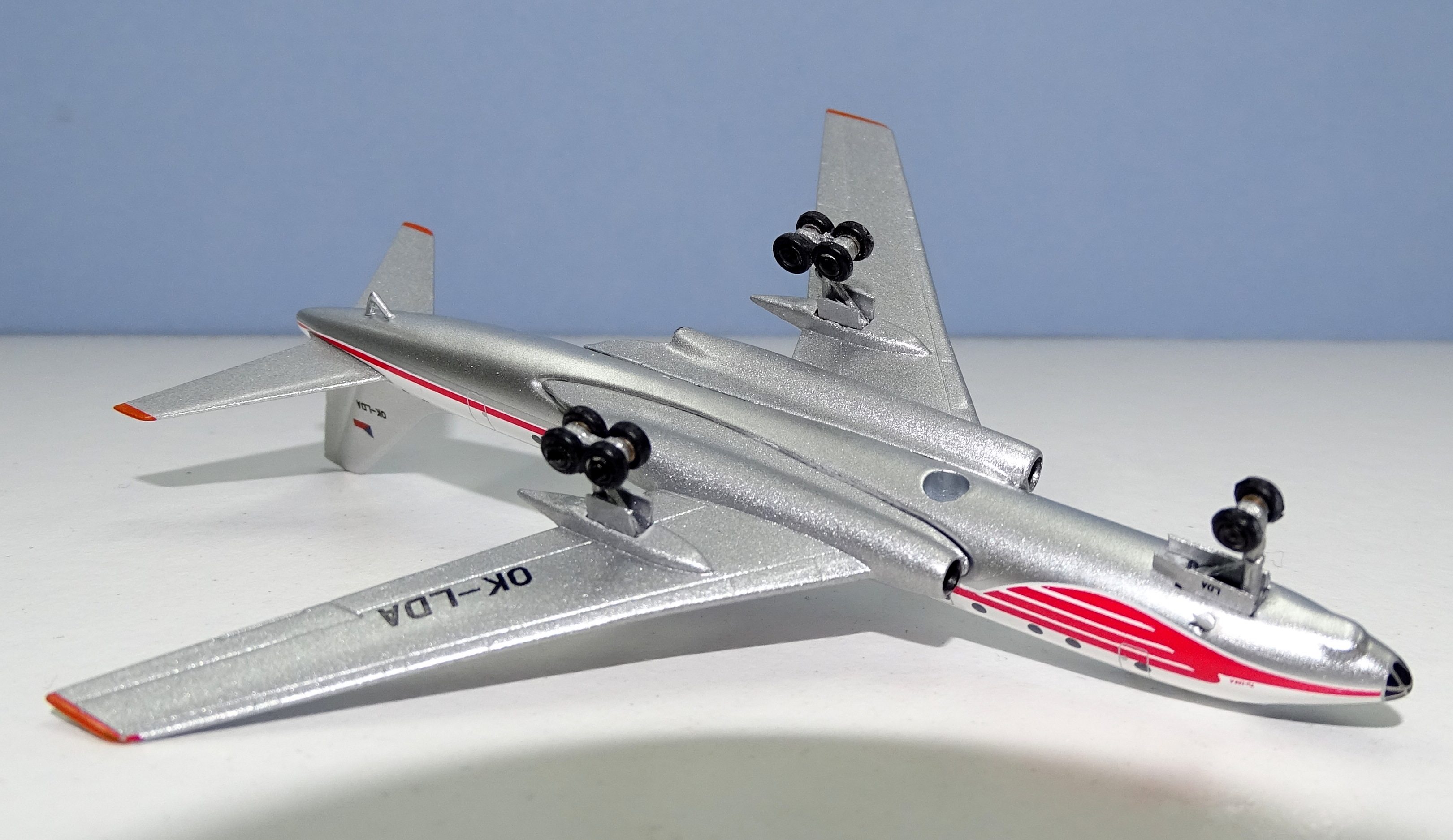

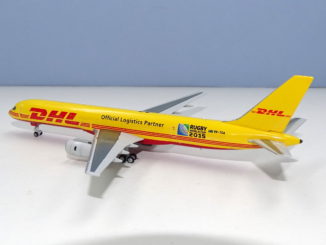
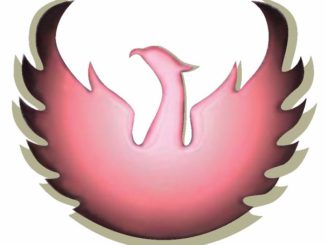

I was involved in the production of this and think it’s a great effort from all those involved and great credit to Kamran to get this very important part of airline history made. If the Inflight factory take on board your comments, the Aeroflot models will be a sell-out!
Where can I get hold of one?
Most major diecast sellers have had it in stock.
I agree with the observations of the author. The TU104 is a great addition to any 1:400 collection. While the mold may not appear too sophisticated, remember the actual aircraft was pretty plain! More importantly its great that I400 has created and delivered a truly historic aircraft. Lets hope that the TU134 B377 and the Breguet 761/763/765 to name but a few get the same treatment.
Where can I buy this TU-104 model?
Swept surfaces civil turbojet transport with no pods! Just ordered!